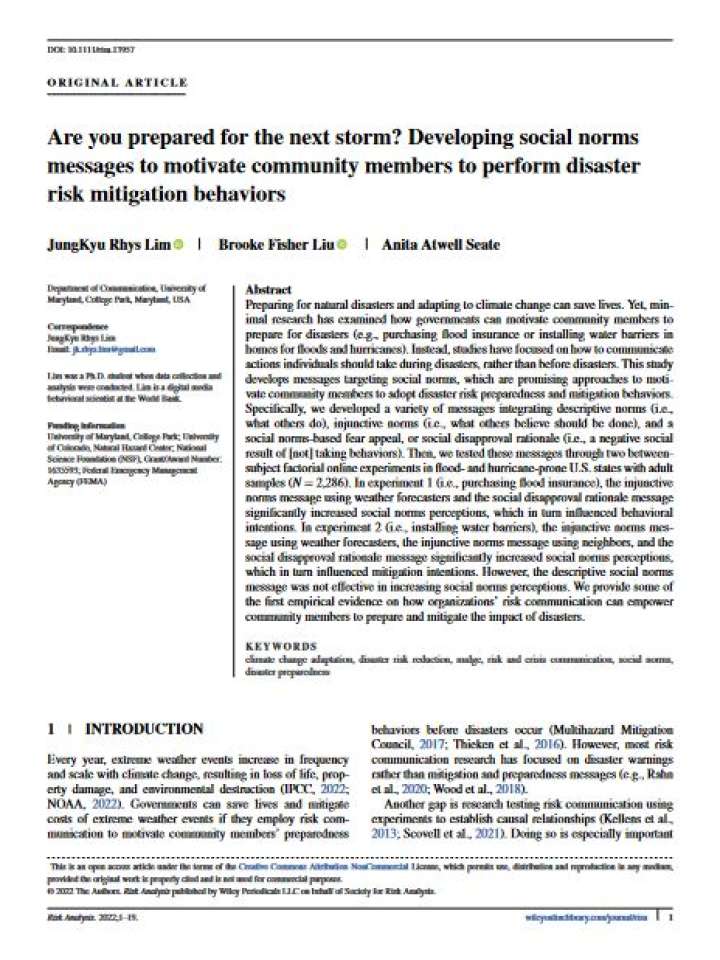Are you prepared for the next storm? Developing social norms messages to motivate community members to perform disaster risk mitigation behaviors
This study develops messages targeting social norms, which are promising approaches to motivate community members to adopt disaster risk preparedness and mitigation behaviors. Preparing for natural disasters and adapting to climate change can save lives. Yet, minimal research has examined how governments can motivate community members to prepare for disasters (e.g., purchasing flood insurance or installing water barriers in homes for floods and hurricanes). Instead, studies have focused on how to communicate actions individuals should take during disasters, rather than before disasters. Specifically, the authors developed a variety of messages integrating descriptive norms (i.e., what others do), injunctive norms (i.e., what others believe should be done), and a social norms-based fear appeal, or social disapproval rationale (i.e., a negative social result of [not] taking behaviors).
Then, the researchers tested these messages through two between-subject factorial online experiments in flood- and hurricane-prone U.S. states with adult samples (N = 2,286). In experiment 1 (i.e., purchasing flood insurance), the injunctive norms message using weather forecasters and the social disapproval rationale message significantly increased social norms perceptions, which in turn influenced behavioral intentions. In experiment 2 (i.e., installing water barriers), the injunctive norms message using weather forecasters, the injunctive norms message using neighbors, and the social disapproval rationale message significantly increased social norms perceptions, which in turn influenced mitigation intentions. However, the descriptive social norms message was not effective in increasing social norms perceptions. We provide some of the first empirical evidence on how organizations’ risk communication can empower community members to prepare and mitigate the impact of disasters.
Explore further
